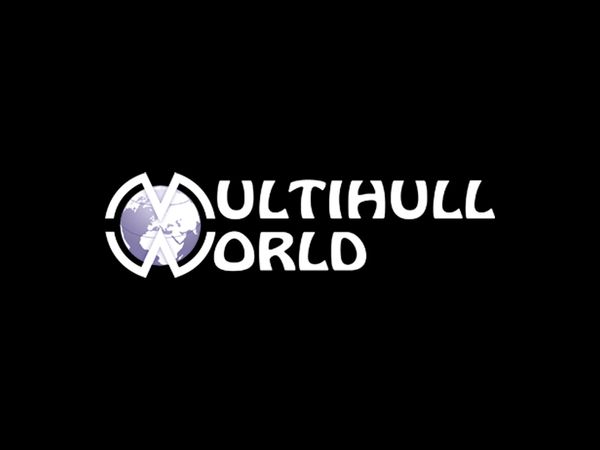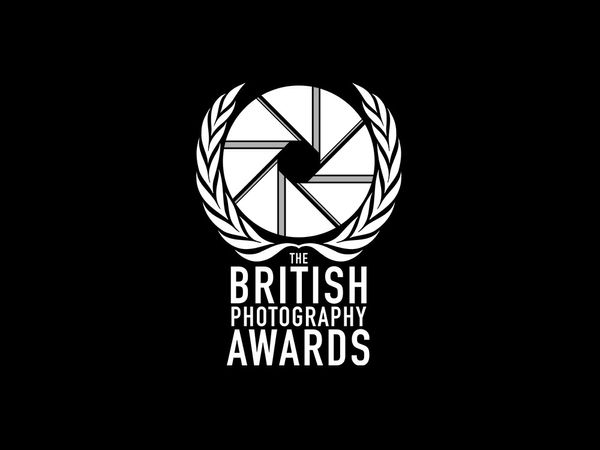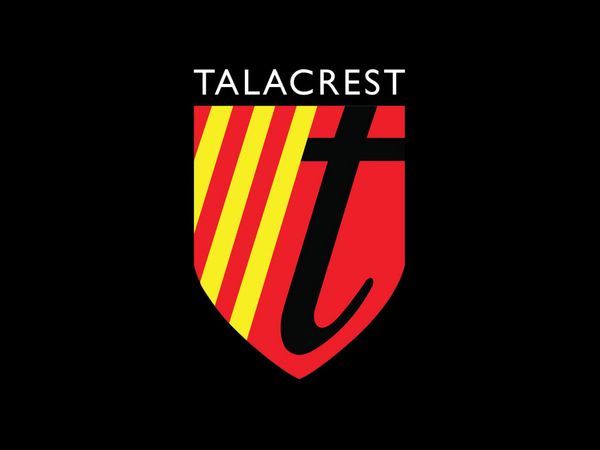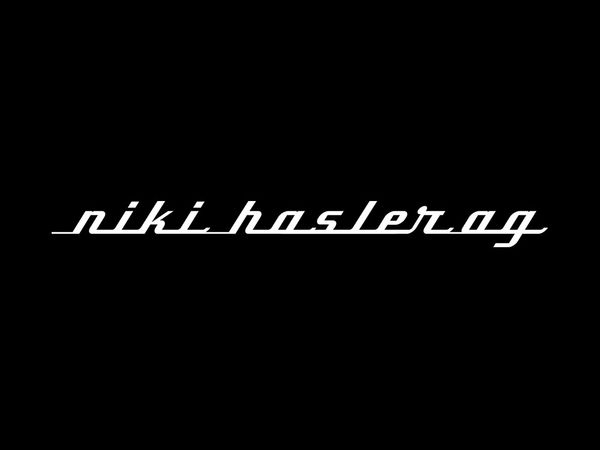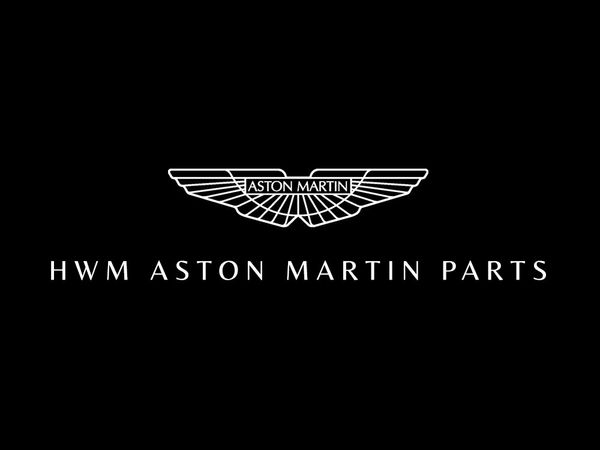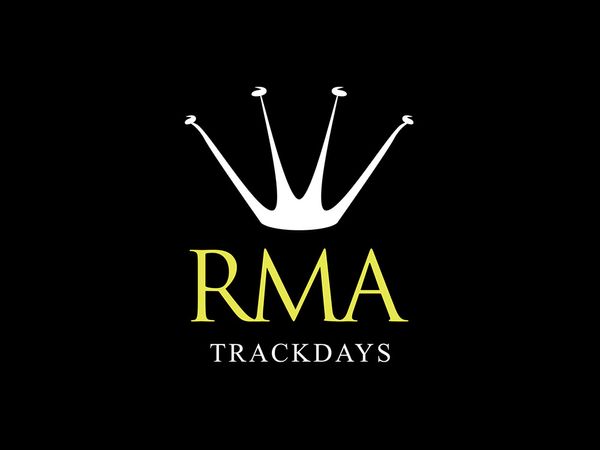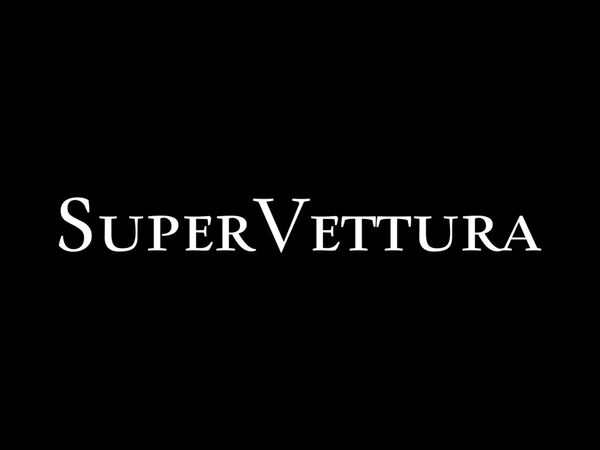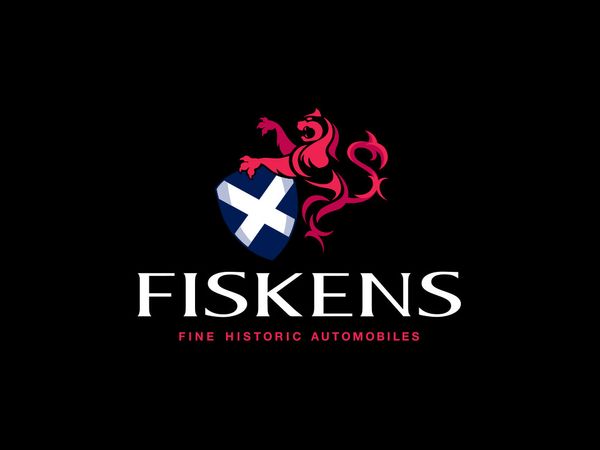Built upon the company’s new three-part aluminium platform, Super 3 is the first Morgan with a monocoque structure
Powered by a 1.5-litre Ford three-cylinder engine, it significantly exceeds the power and performance figures of previous three-wheeled Morgan models
Super 3 introduces a new product family for Morgan, the design language of which draws inspiration from the jet age, an era in which function influenced form and horizons were broadened
Super 3 is focused on offering a unique motoring experience within which driver engagement and the pursuit of adventure is encouraged
The most configurable Morgan ever, Super 3 has been designed with a limitless combination of options and accessories for owners to tailor their vehicle
Super 3 is meticulously engineered, having undergone the firm’s most rigorous durability programme to date
Super 3 succeeds the 3 Wheeler, which was produced between 2011 and 2021
Available to order now, Super 3 is priced from £41,995 in the UK, with customer deliveries starting in June 2022
The Morgan Motor Company today unveils Super 3, one of the most intriguing and distinctive vehicles the company has ever built. Super 3 has been designed from the ground up to offer new levels of character, thrill and adventure, principles that have defined Morgan’s three-wheeled product since the company was founded 113 years ago.
At the very heart of Super 3’s personality is its driving character. Primarily, a three-wheeled Morgan is a vehicle that entices you to get behind the wheel, offering a unique combination of mechanical feel, connection to the environment and visual differentiation from anything else on the road. Few vehicles will engage their occupants like Super 3, which encourages owners to feel present in the craft of motoring and entices them to embark on incredible adventures.
As the company’s most configurable model to date, Super 3 offers an extensive list of options and accessories that allow owners to tailor their own experience. From adventure touring accessories to race-inspired liveries, Super 3 adopts multiple personalities to reflect the individuality of its owner. Three expressions of these personalities can be seen on the launch vehicles.
Like every Morgan, Super 3 will be built in Malvern, Worcestershire, at the company’s Pickersleigh Road factory. Skilled craftsmen and women have been handcrafting cars in these hallowed red brick buildings since 1914, just five years after HFS Morgan invented the first Morgan, known as ‘The Runabout’.
Design
Overview
With Super 3, Morgan introduces a new design philosophy. In comparison with the outgoing 3 Wheeler, which was created in the style of the 1920s V-twin-engined three-wheelers, Super 3’s designers and engineers have drawn influences from the mid to late century. The jet age was an era in which there was a logical relationship between function and form, as the horizons of imagination were broadened.
Aerodynamic and mechanical requirements have heavily influenced the form and proportions of Super 3. This is most notable in the cast aluminium structures that provide the face of the vehicle, brace the engine and control the corner packages, while also directing air into the side-mounted cooling packs.
Two rectangular ‘diffuser plates’ – referred to as ‘sideblades’ – intelligently manage cooling requirements while also presenting a platform for panniers, luggage racks and liveries.
Super 3 is Morgan’s first clean-sheet design since the launch of the Aero 8 in 2000 and the company’s biggest visual departure since the 1962 Plus 4 Plus. Super 3 challenges the typical perceptions of Morgan design yet remains true to the company’s underlying principles and heritage.
The exact positioning of the engine – now car-derived and mounted in-board – within Super 3 is of crucial importance. Chosen in part due to its compact nature, the inline three-cylinder block sits precisely behind the front axle line, delivering optimum weight distribution and desirable proportion. The latter is a key principle for Morgan's designers, who determine it vital that the body of the car is visually towed by its front wheels rather than sat on top of them. Super 3 has a mechanically intricate front end and exhibits linear geometry, which is intentionally contrasted against the trailing aerodynamic passenger compartment.
Honesty of design is one of Morgan’s key principles, and Super 3 embodies this wherever you look. Every feature – no matter how superficial it may appear – has an underlying mechanical purpose: the vehicle celebrates the marriage of design and engineering. Examples of this are prominent throughout Super 3. Features such as the metallic impressions in the footwell side panels, which stiffen the surface but are exposed as a design feature. Everything is honest, with reason.
Face
Super 3’s face portrays two familiar headlights and a horseshoe front grille, both recognisable elements of Morgan design. Mounted on the headlight pods are two small, machined aluminium turrets. These turrets house the indicators and position lights, satisfying wide field-of-vision requirements and resulting in the headlights themselves sitting lower and delivering a low-slung, purposeful aesthetic.
The engine resides beneath the nose cone, which is positioned deliberately to deliver both optimal weight distribution and desirable proportion. This visual mass sits directly behind the centre line of the front wheels and is a principle proportion of Super 3. Beneath the cowl, the engine is visible through a mesh with its moving mechanical components clear to see.
Bracing the engine are structural aluminium castings finished in silver or black. These castings support the engine and corner packages while also ducting air into the cooling packs. The mechanical requirements of these castings have delivered the character of Super 3’s face and have become a crucial design element.
All of the elements of Super 3’s wishbones, pull-rod suspension and headlight structure have been shaped to assist airflow to the radiators behind them, and the mechanical complexity is reminiscent of that of early-century three-wheeled Morgans. The headlight stalks themselves are structural, acting as an additional brace between the upper and lower wishbone pick-up points, while continuing to reflect the vehicle’s trihedral theme.
As well as providing an aerodynamic advantage, the pull-rod suspension brings dynamic benefits by reducing unsprung weight. In parallel with the shape of the front casting, it facilitates a free flow of air towards the side-mounted radiator packs. Visually, the setup reduces clutter and is yet another example of form and function being one and the same.
The engine mount strategy is unique to Super 3. Specifically, the Hartland Strut – named after the Morgan engineer that designed it – is the foremost mount and integral to the face of the car, while managing the torque reaction of the engine.
The front wheel design is by Morgan. The wheels' positive offset allows for the longest possible suspension wishbones, with the brakes mounted far out. This maximises ride quality, handling and stability. The inside face of the wheel arches is closed-off, which works aerodynamically both to reduce wind noise and to help the flow of cooling air to the radiators behind them. To keep Super 3 looking proportionally correct, an all-new tyre has been developed with Avon (see driving dynamics, below).
Sideblades (diffuser plates)
One challenge faced during the creation of Super 3 was the desire to maintain a small footprint while also improving on the turning circle of the outgoing model. Sculpted castings carefully flank the engine, with rectangular radiators sitting outboard of these castings, and this limited the space available for the front wheels.
To overcome this challenge, the radiators have been encapsulated behind extremely thin and flat panels. On a jet aircraft, these panels would be referred to as ‘diffuser plates’; on Super 3, these ‘diffuser plates’ are referred to as the ‘sideblades’. The sideblades efficiently manage inbound and exhaustive airflow through the radiators.
Coincidently, this aesthetic reflects a long-standing Morgan design trait of a central body flanked by separate wing forms.
The sideblades also allow numerous luggage mounting options thanks to some uniquely designed universal fixings, also referred to as ‘accessory rails’. Owners can choose from a range of panniers and exo racks that are neatly fixed and secured to the sideblades. The feedback and experience of existing 3 Wheeler owners has been instrumental in determining Super 3’s adventure and touring credentials. During a decade of Morgan 3 Wheeler production, owners have taken their vehicles on road trips and adventures around the world. These adventures, combined with adventure motorcycle touring and overland vehicle design, provided inspiration to Super 3’s designers throughout the project.
Sideblades can be painted to match the main body colour or finished in a contrasting colour, and they provide a canvas for the application of decals and livery packs.
Tail
While the front end embodies mechanical honesty, the tail contrasts this with elegant, streamlined simplicity. An exposed rib forms a beltline around the vertical midpoint of the vehicle. This feature is a nod to traditional seam joining techniques deployed on mid-century aircraft fuselages, and it is often apparent in 'belly tank' racers and early jets. Beneath it lies a unique cut-off tailpipe design, a feature that would normally be impossible but which meets regulations due to its positioning inbound of this beltline.
A casting at the rear apex of Super 3 mirrors the texture and functional prowess of the front castings. Primarily, the rear casting clamps the two sides of the monocoque structure together. However, it also houses the fog and reverse lights, provides a base for the number plate mount and obscures the all-important pressure relief venting for the rear wheel well. Furthermore, the rear casting integrates a hinge for the rear boot lid and optional luggage rack, and it allows this accessory to be lifted independently or in unison with the boot. Underneath the rear clamshell boot is an enclosure sculpted to provide maximum luggage capacity.
Interior
The interior of Super 3 has – necessarily, given its adventure credentials – been designed for resilience. Rated at an approved ingress protection level of IP64, any part of the interior is completely dust-tight and protected against water splashing from any direction, even down to the integrated USB sockets.
The minimalist dashboard features Morgan’s traditional centre-mounted dials, but for the first time in a Morgan they are fully digital. Their surrounds – available in both anodised black or silver finishes – are formed from metal, just like any touchpoint in the cabin, and are cold to the touch, giving a material authenticity. The engine start/stop button, inspired by the ‘missile release’ button on military aircraft, is carried over from the outgoing model.
A choice of seat materials includes vinyl, water-resistant leather, saddle leather with enhanced durability and a technical fabric that combines a high level of water resistance, UV resistance and ease of maintenance and which offers an appealing alternative to leather.
Available for the first time is a footwell heater, making Super 3 even more suitable for adventure, while comfort is further enhanced by a reach- and rake-adjustable steering wheel and a quick-release adjustable pedal box.
A universal fixing – the same as the ones mounted to the vehicle sideblades – is mounted under the dashboard and allows for a cup holder or Quad Lock phone mount to be fitted. Bungee cords can be fitted to the chassis impressions in the outer cockpit to provide a quick storage solution for coats, maps and small bags, while a discreet lockable underseat compartment allows more valuable items to be stored.
Jonathan Wells, Head of Design, Morgan Motor Company, said: “Morgan 3 Wheeler owners are individual, relish doing things in their own way, and actively seek adventure. With Super 3, we aimed to exaggerate these qualities through design.
“Super 3 stands out as something different. It looks towards our past, is relevant in the present, and reinstates a firm vision of Morgan’s design future.
“It felt natural to derive influences for Super 3 from the succeeding decades its 1920s inspired predecessor was paying homage to. During the ‘jet age’, the balance of form vs function was equalised. It was within these decades that the most aerodynamic forms were, not only required, but also admired.
“Morgan offers a unique cohesion of design, engineering and craft in all of its products, and this is especially apparent within Super 3. No component is superfluous. Every part has a function and – in most cases – has more than one purpose. This approach has provided significant economic benefits and has allowed us to deliver an exceptional high quality throughout.
“Super 3 gives you a deep mechanical connection to the car and your surroundings. It takes the idea of adventure and escapism beyond just a romantic notion, whilst presenting a blank canvas for self-expression.
“Life is rarely more complicated after a drive in a Super 3.”
Engineering
Platform
Underpinning the Morgan Super 3 is a bonded aluminium Superformed monocoque platform. Morgan’s expertise with bonded aluminium platforms dates back more than two decades, to the start of Aero 8 production, and was furthered with the CX-Generation platform used in the 2020 Plus Four and 2019 Plus Six. Super 3’s platform evolves that technology further still.
For the first time in Morgan history, the platform is a true monocoque, with stressed exterior ‘A-surfaces’ (as opposed to a unibody design found on most modern production cars, with bolt-on non-structural panels). Not only does this make for a lighter and more rigid chassis but also provides packaging benefits and gives more interior occupant space with no intrusion. Its rigidity not only benefits the car’s dynamic capability but also enhances safety, with Super 3 meeting the same exacting M1 and Reg. 12 frontal impact standards as Morgan’s Plus Four and Plus Six four-wheeled cars.
Super 3 continues Morgan’s long-standing use of Superform technology. The heating of aluminium to a superplastic state before vacuum forming it allows for intricate exterior shapes to be created with a lower material stress than pressing. While Superformed exterior panels are a proven technology in automotive production, this is the first time the process has been used to produce a structural vehicle platform.
Further displaying Morgan’s use of innovative construction techniques is the exposed structural front casting. As well as providing the rigidity of the car and mounting points for the suspension while performing a vital safety function, it also carries the attractive finish required of an A-surface. As a display of the car’s mechanical honesty, it provides a link to motorcycles, which use exposed castings in their frames.
Drivetrain
In 1933, Morgan introduced the F-Type three-wheeler, which made the switch from V-twin power to a conventional Ford engine, housed under a bonnet. Almost a century later, Ford has again been chosen to supply the engine, specifically its innovative 1.5-litre naturally aspirated three-cylinder petrol engine. Powerful, efficient and characterful, it provides a combination of attributes which make it perfectly suited to its application in the Morgan Super 3. Extensive development has gone into tuning the engine’s acoustic content and enhancing its natural and distinctive three-cylinder character. It is exceptionally compact and has allowed Super 3’s design to remain true to form without compromising passenger space.
The engine is coupled to five-speed Mazda gearbox, as found in MX-5 and used in the outgoing Morgan 3 Wheeler. Unlike the previous model, however, no compensator is required in the driveline, therefore minimising complexity and weight. The bevel box has been re-engineered using a custom tooth profile, and it drives through a carbon fibre-reinforced drive belt.
The powertrain meets motorcycle Euro 5a, which is in line with cars, and will meet Euro 5b which includes OBD requirements.
Driving dynamics
Core to any Morgan product is driving enjoyment, and thanks to more than a century of experience, the company has become a global leader in the dynamic behaviour of three-wheeled vehicles. Super 3 is no exception. It is fundamentally stable – achieved through a dedication to keeping the vehicle’s mass within its contact triangle – and feels planted but with an assertive turn-in feel. Pull-rod suspension is key to this, bringing mass inboard and reducing unsprung mass while aiding airflow to the radiators.
Morgan has worked in partnership with Avon to develop its own 20-inch diameter tyre for Super 3. Reviving the iconic Speedmaster name, the tyre is based on the look of a heritage motorcycle tyre with 'ballooned' sidewalls but has been engineered specifically for Morgan and is closer to a car tyre in its design. To ensure ultimate performance, the compound and casing design have been through multiple iterations of fine tuning.
The rear tyre on a three-wheeler plays a crucial role in the handling and dynamic capabilities. The company has undergone a rigorous testing programme to determine the exact tyre choice for the rear of Super 3. After significant real-world testing and simulation, an Avon all-season tyre was selected to provide optimum slip angle. The rear tyre on a three-wheeler is often subjected to the dirtiest, wettest part of the road, and as the driving tyre it must maintain appropriate contact and grip.
Extensive development has also taken place to tune the feel of the controls. For example, the clutch is deliberately well weighted with a short travel, to reflect the short throw of the gearbox. Particular attention has been paid to the pedal spacing, allowing easy heal-and-toe gearchanges and retaining a playful feel.
While mechanical connection was crucial, refinement has been enhanced thanks to a combination of the rigidity of the bonded chassis and extensive drivetrain development. A new bevel box with custom tooth profiles (see drivetrain, above) reduces additional noise, and has been carefully tuned to ensure it maintains a straight-cut, race-car feel but without an overbearing mechanical noise.
Durability
The Super 3 marks Morgan's most comprehensive vehicle development programme yet. The company has employed a new level of competence in CAE (computer-aided engineering) and structural durability simulations. Its engineering practices are in line with many OEM whole-vehicle programmes and far exceed motorcycle standards.
In testing, Super 3 has outperformed its targets. Several validation prototype vehicles have been operational at numerous proving grounds, undergoing continual durability programmes comprising Belgian pavé, torsional ramps and continuous full-bore acceleration and braking tests.
Further test vehicles have undergone 'real-world' mileage accumulation in all conditions, exceeding the parameters of any testing programme operated by the company to date and allowing for extensive insight into the life of the vehicle.
Particular focus has been paid to Super 3’s cooling package. Using a temperature-, pressure- and load-controlled environment, simulations have included the running of the car fully laden in some of the harshest and most challenging environments in the world, all of which were achieved with high levels of cooling redundancy.
Chris Arthur, Chief Engineer, Morgan Motor Company, said:“The Morgan Super 3 represents a new level of engineering integrity for Morgan. Superform techniques have allowed us to achieve something that is typically out of reach for niche manufacturers. The monocoque platform is light, stiff, strong and resilient and looks good. Throughout the vehicle, the quality of finish is comparable to that of much larger manufacturers, and we feel we have engineered a car that delivers a lot more value to Morgan customers.
“Super 3 remains true to Morgan’s roots because it’s a non-standard construction and every element has purpose. We have employed techniques that are appropriate and improve the quality for the customer. It is a modern take on utilising your own production methods to remain unique.
"I am particularly proud to be a part of the team tasked with delivering Super 3. While we have grown in recent years, we remain a small yet hugely resourceful and talented group. Super 3 is a testament to their skill, knowledge and hard work.”
Options & accessories
Customisation
Super 3 is the most configurable Morgan to date. The company has curated an extensive list of more than 200 options and accessories, each one allowing owners to tailor their Super 3. A key project aim was to design and homologate all accessories and options alongside the development of the main vehicle. This not only ensures that those options work in total harmony with the vehicle but also removes the need to retrofit additional options once the vehicle has been built.
Feedback from owners of previous three-wheeled models has been instrumental in defining some of the key accessory themes. These themes – three of which can be witnessed on the vehicles demonstrated at launch – include adventure touring, contemporary design and classic motorsport.
Morgan has developed many of its own options and accessories and worked with several key partners to help curate the options available. These project partners include Malle London, Beeline and Quad Lock.
Malle London
Malle London creates the finest British motorcycle luggage and adventure accessories. Morgan has worked in partnership with Malle London to develop the Morgan x Malle range of vehicle and clothing accessories.
The Morgan x Malle pannier is made from 18oz waxed black canvas and features unique fixtures on the reverse to attach the pannier to the sideblade. The size of the pannier is unique to Morgan and features multiple compartments as well as a rear-mounted cup holder.
A Morgan x Malle driving jacket has been developed in a partnership between the two companies. Available in black or desert sand, a matching knee guard helps to protect the occupant’s legs in adverse weather conditions.
Beeline Navigation
Working in partnership with Beeline, Super 3 features Morgan’s first in-car navigational solution. Deliberately simple yet effective in its application, Beeline technology is currently employed in several motorcycle applications. A bespoke bracket fits onto the column top to neatly mount the Beeline device. The device itself is waterproof and shockproof, linking to a smartphone app offering worldwide coverage via Google mapping.
Quad Lock
Making use of accessory rails situated around the vehicle and under the dashboard, a secure smartphone mounting solution has been developed in partnership with Quad Lock. Using Quad Lock’s universal fixings, a smartphone mount works alongside a Quad Lock case that is available for all smartphones.
Accessory rails
In what has been recognised as the company’s first patent, a unique fixing has been designed to allow for myriad opportunities to adorn Super 3 with additional options. Known as 'accessory rails', the fixings are available in anodised black or silver and can be applied to sideblades, under the dashboard, on the front and rear bulkheads, on wind deflectors, on the rear luggage rack and on the rear end of the hard shell pannier. Accessory rails allow for the addition of items such as soft panniers (developed with Malle London), a hard shell pannier available in body colour or mohair, an exo side rack with optional bungee cords, an internal cup holder, a Quad Lock phone mount, a helmet mount and camera mounting points. Accessory rails also fix on to the wind deflectors, which are available in two sizes and can be interchanged as desired. A tall wind deflector can be fitted for longer touring, while low wind deflectors can be optioned in clear or yellow tint. Each accessory rail also features a thread for mounting a camera, providing owners with a simple solution to capture their adventures on video.
Hard shell pannier
Aluminium hard shell panniers can be optioned as part of a Super 3 build specification. The panniers use accessory rails to fix on to the sideblades and can be secured using a security fastening mechanism. Available in mohair fabric finish – or painted to match the specified body colour of the vehicle – hard shell panniers provide a quality and aesthetically pleasing luggage solution. A fabric-lined interior and weatherproof exterior ensure that items are transported in safety. To the rear of the hard shell pannier there is an accessory rail to allow for an externally mounted cup holder.
Graphics packs
As with the previous Morgan 3 Wheeler, graphics packs play a significant role in the customisation of the Morgan Super 3. A choice of five full vehicle liveries and seven individual decals can be selected, with the opportunity to combine graphics and apply a custom 'call sign' or national flag.
Inspirations from aviation, technical glitch graphics and heritage markings have inspired many of the decals. Owners can select a call sign for their Super 3, which will add their ‘pilot’ name and that of their ‘co-pilot’ in a motorsport-inspired application just below the cockpit. Should they wish, owners can also choose to add their national flag, which will be situated next to their call sign.
Super 3 is all about fun and being different. Each of the liveries and decals has been designed to add further personality to the vehicle, a quality that has resonated with Morgan owners in previous models.
Luggage racks
An exo-skeleton rear luggage rack is sculpted to the rear profile of Super 3 and can be specified in black or silver. The rack is attached by a hard fixing point to the aluminium casting at the rear of the vehicle and is designed to open and close along the same axis as the boot, negating the need to remove it when opening and closing the boot. When down, the rack latches on to the roll hoops with a simple fixing. It also features holes and slits to allow for the attachment of storage netting.
Side racks are designed in the same style as the rear rack and are also available in black or silver with a range of bungee cord colours to choose from. The side racks allow for the quick storage of soft bags or clothing.
Toby Blythe, Head of Marketing, Morgan Motor Company, said:“Options, accessories and customisation are fundamental to the ethos of Super 3. We identified several key themes among owners of the previous Morgan 3 Wheeler and looked to expand on them. Working with a hand-picked selection of project partners in the premium lifestyle, outdoor and technology industries, we have been able to offer Super 3 owners an almost endless choice of vehicle options that can be specified at order point or at a later date.
"The concept of premium utility is something that features heavily in Super 3’s options: the idea that you can equip items that are luxurious and quality yet still ruggedised and functional. This concept is celebrated in products such as the Malle London x Morgan soft panniers, and we are delighted to have worked with such like-minded companies.
"We are confident that Super 3 will build on Morgan’s incredible heritage of three-wheeled vehicles by offering something to our existing customers as well as appealing to those who are new to the brand. We can’t wait to watch as Super 3 owners embark on incredible adventures all over the world.”
Super 3, the name
Morgan has a long history of using the word 'Super' in its product names, dating back to Super Sports three-wheelers of the 1930s and more recently with four-wheeled cars such as the Aero SuperSports. In any deployment, the term has represented an enhanced level of performance and refinement and a moving forward of technology. Super 3 is the embodiment of this. A further link is the prominence of the term ‘super’ in the American lexicon of the 1950s and 1960s, a period of culture during which some of the early inspiration for Super 3 was anchored. Super also defines a new product family for the company, joining the 'Plus' range and setting a new design language for future models.
History
HFS Morgan built his first three-wheeler in 1909, in the process founding the eponymous Malvern-based manufacturer. Three-wheelers would continue to be produced until 1952, over that time setting myriad records in racing and taking on adventures in some of the most extreme parts of the world. In 2011, Morgan would revive the three-wheeler with a version encapsulating the spirit of the early V-twin-engined cars.
Notable was the introduction of a new variant in 1932, the F-Type, which featured an enclosed car-derived Ford engine in place of the original front-mounted V-twin, itself prophetic of a narrative that was set to repeat nine decades later. The original need for the F-Type was based on customer feedback, including customer demand for a third gear as well as reverse.
Ordering
Super 3 is available to order from Morgan dealerships in the UK, Europe, the USA and select ROW markets at launch. Customers in the UK and Europe will receive their vehicles first, with USA deliveries following later in 2022. Japan, Australia and select other ROW markets will follow thereafter. Interested customers are encouraged to contact their nearest Morgan dealership for information on availability in their market.
The price for Super 3 starts at £34,958.33 excluding local market taxes. In the UK, which is Morgan’s biggest market, Super 3 is £41,995 plus on-the-road costs. Pricing is in line with the outgoing model, which finished production in 2021 with a limited run of P101 special editions.
A new configurator is live at launch, allowing customers to fully tailor their new Super 3. Expressions of the vehicle provide a starting point for users to begin configuration. The configurator is powered by gaming technology and gives users a 360° view of the vehicle.
Steve Morris, Chairman and CEO, Morgan Motor Company, said:“Following on from the incredible success of the outgoing Morgan 3 Wheeler has been no easy task. When we first decided to reintroduce it back in 2011, the company couldn't have imagined just how popular and successful the V-twin model would be. The Morgan 3 Wheeler represents something different, something unique and something to be celebrated. As we launch Super 3, I am confident that our latest three-wheeled offering is as relevant as ever.
“We have developed this vehicle at a time when the industry, and the wider world, has been challenged beyond comprehension. Yet our engineering and design teams, along with our project partners, have been able to deliver a fitting new chapter to Morgan’s three-wheeled story.
“The all-new Super 3 introduces new levels of engineering integrity to Morgan, a new sense of adventure to the brand and a new design language that indicates our future direction.”

